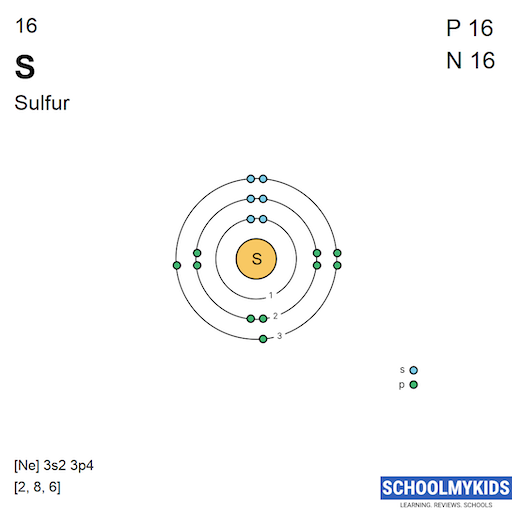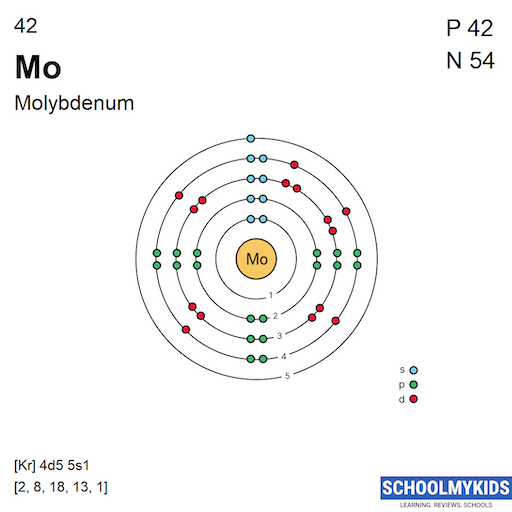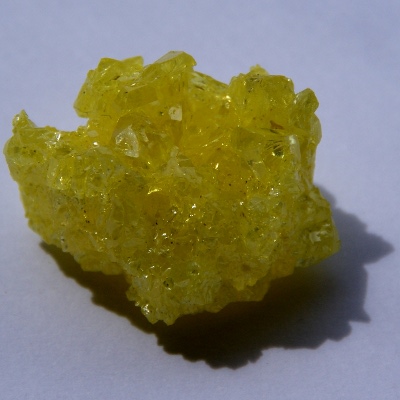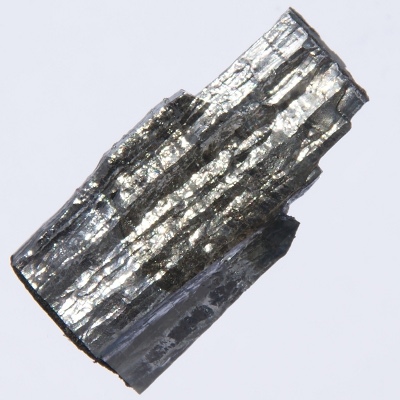Periodic Table Element Comparison: Compare Elements - Sulfur vs Molybdenum
Compare Sulfur and Molybdenum
Compare Sulfur and Molybdenum on the basis of their properties, attributes and periodic table facts. Compare elements on more than 90 properties. All the elements of similar categories show a lot of similarities and differences in their chemical, atomic, physical properties and uses. These similarities and dissimilarities should be known while we study periodic table elements. You can study the detailed comparison between Sulfur vs Molybdenum with most reliable information about their properties, attributes, facts, uses etc. You can compare S vs Mo on more than 90 properties like electronegativity , oxidation state, atomic shells, orbital structure, Electronaffinity, physical states, electrical conductivity and many more.
Facts
| Name | Sulfur | Molybdenum |
| Atomic Number | 16 | 42 |
| Atomic Symbol | S | Mo |
| Atomic Weight | 32.065 | 95.94 |
| Phase at STP | Solid | Solid |
| Color | Yellow | Gray |
| Metallic Classification | Other Nonmetal | Transition Metal |
| Group in Periodic Table | group 16 | group 6 |
| Group Name | oxygen family | chromium family |
| Period in Periodic Table | period 3 | period 5 |
| Block in Periodic Table | p -block | d -block |
| Electronic Configuration | [Ne] 3s2 3p4 | [Kr] 4d5 5s1 |
| Electronic Shell Structure (Electrons per shell) | 2, 8, 6 | 2, 8, 18, 13, 1 |
| Melting Point | 388.36 K | 2896 K |
| Boiling Point | 717.87 K | 4912 K |
| CAS Number | CAS7704-34-9 | CAS7439-98-7 |
| Neighborhood Elements | Neighborhood Elements of Sulfur | Neighborhood Elements of Molybdenum |
History
| Name | Sulfur | Molybdenum |
| History | The element Sulfur was discovered by Chinese/Indians in year Before 2000 BCE. Sulfur derived its name from the Latin word sulphur, 'fire and brimstone'. | The element Molybdenum was discovered by W. Scheele in year 1778 in Sweden. Molybdenum derived its name from the Greek word molybdos meaning 'lead'. |
| Discovery | Chinese/Indians (Before 2000 BCE) | W. Scheele (1778) |
| Isolated | () | J. Hjelm (1781) |
Presence: Abundance in Nature and Around Us
Parts per billion (ppb) by weight / by atoms (1ppb =10^-7 %)
| Name | Sulfur | Molybdenum |
| Abundance in Universe | 500000 / 20000 | 5 / 0.1 |
| Abundance in Sun | 400000 / 10000 | 9 / 0.1 |
| Abundance in Meteorites | 41000000 / 22000000 | 1200 / 250 |
| Abundance in Earth's Crust | 420000 / 270000 | 1100 / 230 |
| Abundance in Oceans | 928000 / 179000 | 10 / 0.64 |
| Abundance in Humans | 2000000 / 390000 | 100 / 7 |
Crystal Structure and Atomic Structure
| Name | Sulfur | Molybdenum |
| Atomic Volume | 15.53 cm3/mol | 9.333 cm3/mol |
| Atomic Radius | 88 pm | 190 pm |
| Covalent Radius | 102 pm | 145 pm |
| Van der Waals Radius | 180 pm | - |
| Atomic Spectrum - Spectral Lines | ||
| Emission Spectrum |  |  |
| Absorption Spectrum |  |  |
| Lattice Constant | 1043.7, 1284.5, 2436.9 pm | 314.7, 314.7, 314.7 pm |
| Lattice Angle | π/2, π/2, π/2 | π/2, π/2, π/2 |
| Space Group Name | Fddd | Im_ 3m |
| Space Group Number | 70 | 229 |
| Crystal Structure | Face Centered Orthorhombic  | Body Centered Cubic  |
Atomic and Orbital Properties
| Name | Sulfur | Molybdenum |
| Atomic Number | 16 | 42 |
| Number of Electrons (with no charge) | 16 | 42 |
| Number of Protons | 16 | 42 |
| Mass Number | 32.065 | 95.94 |
| Number of Neutrons | 16 | 54 |
| Shell structure (Electrons per energy level) | 2, 8, 6 | 2, 8, 18, 13, 1 |
| Electron Configuration | [Ne] 3s2 3p4 | [Kr] 4d5 5s1 |
| Valence Electrons | 3s2 3p4 | 4d5 5s1 |
| Oxidation State | -2, 2, 4, 6 | 4, 6 |
| Atomic Term Symbol (Quantum Numbers) | 3P2 | 7S3 |
| Shell structure |  |  |
Isotopes and Nuclear Properties
Sulfur has 4 stable naturally occuring isotopes while Molybdenum has 6 stable naturally occuring isotopes.
| Name | Sulfur | Molybdenum |
| Known Isotopes | 26S, 27S, 28S, 29S, 30S, 31S, 32S, 33S, 34S, 35S, 36S, 37S, 38S, 39S, 40S, 41S, 42S, 43S, 44S, 45S, 46S, 47S, 48S, 49S | 83Mo, 84Mo, 85Mo, 86Mo, 87Mo, 88Mo, 89Mo, 90Mo, 91Mo, 92Mo, 93Mo, 94Mo, 95Mo, 96Mo, 97Mo, 98Mo, 99Mo, 100Mo, 101Mo, 102Mo, 103Mo, 104Mo, 105Mo, 106Mo, 107Mo, 108Mo, 109Mo, 110Mo, 111Mo, 112Mo, 113Mo, 114Mo, 115Mo |
| Stable Isotopes | Naturally occurring stable isotopes: 32S, 33S, 34S, 36S | Naturally occurring stable isotopes: 92Mo, 94Mo, 95Mo, 96Mo, 97Mo, 98Mo |
| Neutron Cross Section | 0.52 | 2.6 |
| Neutron Mass Absorption | 0.00055 | 0.0009 |
Chemical Properties: Ionization Energies and electron affinity
| Name | Sulfur | Molybdenum |
| Valence or Valency | 6 | 6 |
| Electronegativity | 2.58 Pauling Scale | 2.16 Pauling Scale |
| Electron Affinity | 200 kJ/mol | 71.9 kJ/mol |
| Ionization Energies | 1st: 999.6 kJ/mol 2nd: 2252 kJ/mol 3rd: 3357 kJ/mol 4th: 4556 kJ/mol 5th: 7004.3 kJ/mol 6th: 8495.8 kJ/mol 7th: 27107 kJ/mol 8th: 31719 kJ/mol 9th: 36621 kJ/mol 10th: 43177 kJ/mol 11th: 48710 kJ/mol 12th: 54460 kJ/mol 13th: 62930 kJ/mol 14th: 68216 kJ/mol 15th: 311048 kJ/mol 16th: 337138 kJ/mol | 1st: 684.3 kJ/mol 2nd: 1560 kJ/mol 3rd: 2618 kJ/mol 4th: 4480 kJ/mol 5th: 5257 kJ/mol 6th: 6640.8 kJ/mol 7th: 12125 kJ/mol 8th: 13860 kJ/mol 9th: 15835 kJ/mol 10th: 17980 kJ/mol 11th: 20190 kJ/mol 12th: 22219 kJ/mol 13th: 26930 kJ/mol 14th: 29196 kJ/mol 15th: 52490 kJ/mol 16th: 55000 kJ/mol 17th: 61400 kJ/mol 18th: 67700 kJ/mol 19th: 74000 kJ/mol 20th: 80400 kJ/mol 21st: 87000 kJ/mol 22nd: 93400 kJ/mol 23rd: 98420 kJ/mol 24th: 104400 kJ/mol 25th: 121900 kJ/mol 26th: 127700 kJ/mol 27th: 133800 kJ/mol 28th: 139800 kJ/mol 29th: 148100 kJ/mol 30th: 154500 kJ/mol |
Physical Properties
| Name | Sulfur | Molybdenum |
| Density | 1.96 g/cm3 | 10.28 g/cm3 |
| Molar Volume | 15.53 cm3/mol | 9.333 cm3/mol |
Elastic Properties | ||
| Young Modulus | - | 329 |
| Shear Modulus | - | 20 GPa |
| Bulk Modulus | 7.7 GPa | 230 GPa |
| Poisson Ratio | - | 0.31 |
Hardness - Tests to Measure of Hardness of Element | ||
| Mohs Hardness | 2 MPa | 5.5 MPa |
| Vickers Hardness | - | 1530 MPa |
| Brinell Hardness | - | 1500 MPa |
Electrical Properties | ||
| Electrical Conductivity | 1e-15 S/m | 20000000 S/m |
| Resistivity | 1000000000000000 m Ω | 5e-8 m Ω |
| Superconducting Point | - | 0.915 |
Heat and Conduction Properties | ||
| Thermal Conductivity | 0.205 W/(m K) | 139 W/(m K) |
| Thermal Expansion | - | 0.0000048 /K |
Magnetic Properties | ||
| Magnetic Type | Diamagnetic | Paramagnetic |
| Curie Point | - | - |
| Mass Magnetic Susceptibility | -6.2e-9 m3/kg | 1.17e-8 m3/kg |
| Molar Magnetic Susceptibility | -1.99e-10 m3/mol | 1.122e-9 m3/mol |
| Volume Magnetic Susceptibility | -0.0000122 | 0.0001203 |
Optical Properties | ||
| Refractive Index | 1.001111 | - |
Acoustic Properties | ||
| Speed of Sound | - | 6190 m/s |
Thermal Properties - Enthalpies and thermodynamics
| Name | Sulfur | Molybdenum |
| Melting Point | 388.36 K | 2896 K |
| Boiling Point | 717.87 K | 4912 K |
| Critical Temperature | 1314 K | - |
| Superconducting Point | - | 0.915 |
Enthalpies | ||
| Heat of Fusion | 1.73 kJ/mol | 36 kJ/mol |
| Heat of Vaporization | 9.8 kJ/mol | 600 kJ/mol |
| Heat of Combustion | - | - |
Regulatory and Health - Health and Safety Parameters and Guidelines
| Name | Sulfur | Molybdenum |
| CAS Number | CAS7704-34-9 | CAS7439-98-7 |
| RTECS Number | {RTECSWS4250000, N/A, N/A, N/A, N/A, N/A} | RTECSQA4680000 |
| DOT Hazard Class | 4.1 | 4.1 |
| DOT Numbers | 1350 | 3089 |
| EU Number | - | - |
| NFPA Fire Rating | - | 3 |
| NFPA Health Rating | - | 1 |
| NFPA Reactivity Rating | - | 0 |
| NFPA Hazards | - | - |
| AutoIgnition Point | - | - |
| Flashpoint | - | - |


